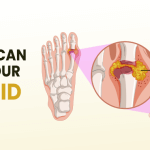|
Penicillins (Penicillin-G: Benzyl Penicillin)
|
|
- All B-lactam antibiotics interfere with the synthesis of bacterial cell wall
- The B-lactam antibiotics inhibit the transpeptidases so that cross linking does not take place
- These enzyme and related proteins constitute penicillin binding proteins (PBPs) which has been located in bacterial cell membrane
|
- Pain at IM site
- Nausea on oral ingestion
- Thrombophlebitis of injected vein
- Toxicity to brain- mental confusion, muscular twitching, convulsions, coma especially in patient with renal insufficiency
- Bleeding– in high dose due to interference with platelet functions
- Hypersensitivity- rash, itching, urticarial and fever
- Superinfections
- Jarish- Herxheimer reaction- penicillin injected to syphilictic patient particularly secondary syphilis may produce- fever, myalgia, exacerbation of lesions, even vascular collapse. This is due to sudden release of spirochetal lytic products
|
- Streptococcal infections– Pharyngitis, otitis media, scarlet fever, rheumatic fever
- Pneumococcal infections– pneumococcal pneumonia, meningitis- not used now because of resistance
- Meningococcal infections- still responsive
- Gonorrhea
- Syphilis- Penicillin is DOC
- Diphtheria
- Tetanus and gas gangrene
- Prophylactic use- Rheumatic fever, Bacterial endocarditis, Agranulocytosis patient
|
|
Phenoxymethyl Penicillin (Penicillin V)
|
|
- It differs from PnG in that it is Acid stable
|
|
- It cannot be depended upon for more serious infections
- Used only for– Streptococcal pharyngitis, sinusitis, otitis media, prophylaxis for rheumatic fever
|



